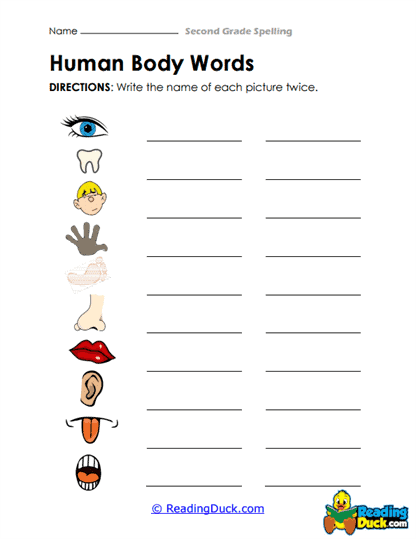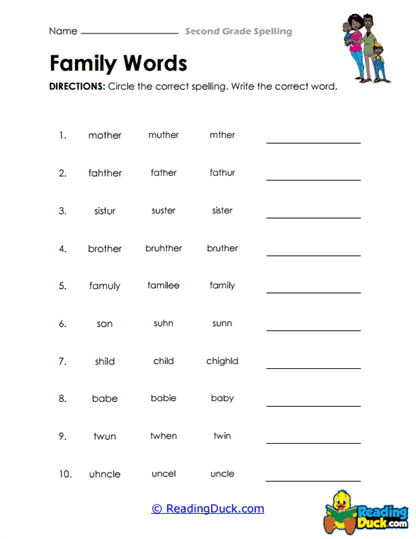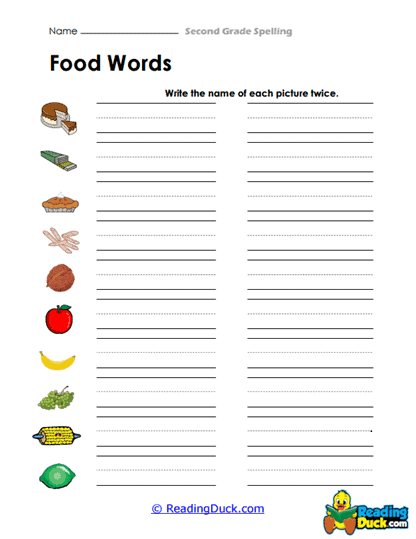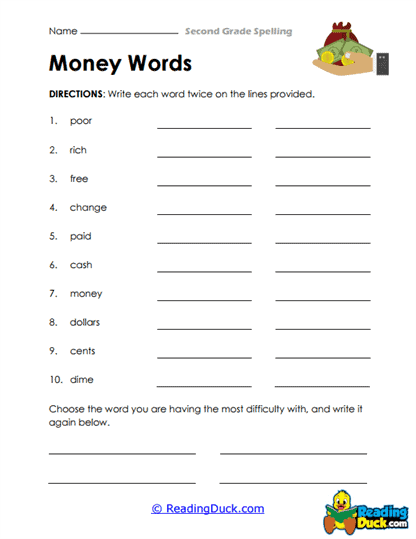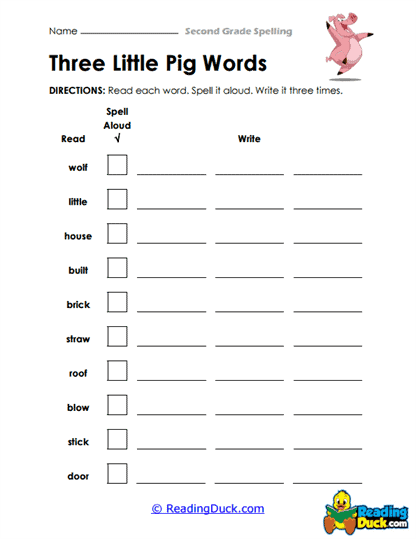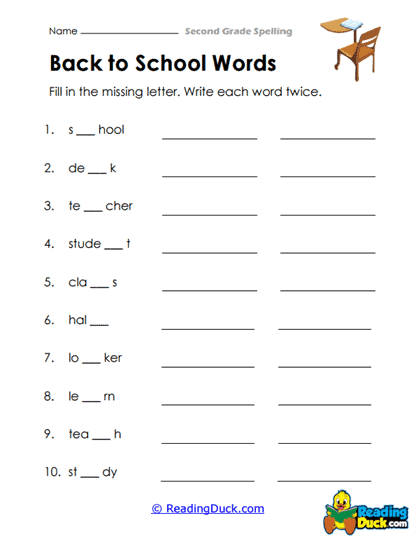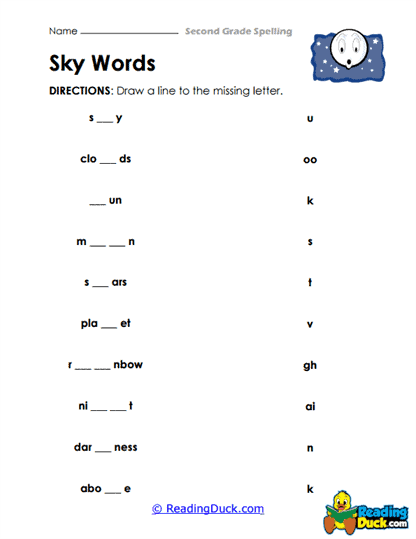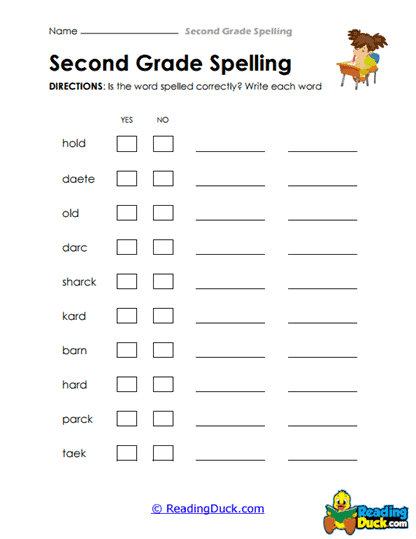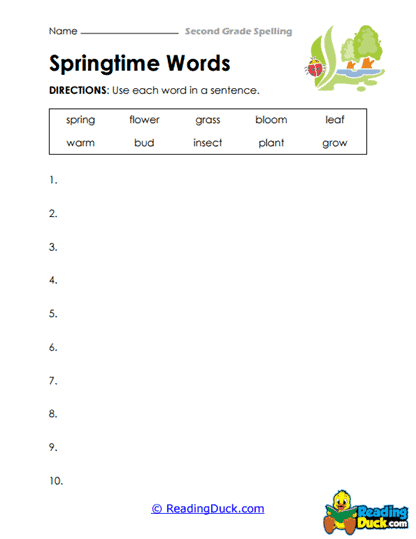2nd Grade Spelling Worksheets
About Our 2nd Grade Spelling Worksheets
This collection of 2nd Grade Spelling Worksheets, part of the Spelling category in the Skills section, is designed to strengthen the spelling abilities of second graders as they continue to build foundational language skills. These worksheets target key areas such as phonetic patterns, word recognition, and vocabulary development. With structured practice and various word-focused activities, they offer a systematic way for students to enhance their spelling. Presented in PDF format, the worksheets are easy to view, download, and print, providing convenience for both classroom and home use. Each worksheet also includes a downloadable answer key, making it simple for educators and parents to assess progress and provide immediate feedback.
Exploring 2nd Grade Spelling: A Comprehensive Overview
Spelling at the 2nd-grade level represents an important phase in a child's language development. At this stage, students transition from mastering basic phonetic rules to tackling more complex spelling patterns. Understanding the intricacies of 2nd Grade Spelling helps educators deliver effective lessons that nurture students’ growing literacy skills.
Introduction to Advanced Phonetic Patterns
By the time students reach 2nd grade, they typically have a firm grasp of simple phonetic sounds and letter combinations. In this phase, they are introduced to more advanced phonetic patterns that expand their spelling capabilities.
- Long and Short Vowel Sounds: While 1st graders focus on short vowel sounds, 2nd graders begin to explore both short and long vowel sounds. For example, they learn that the short vowel sound in "cat" differs from the long vowel sound in "cake." Understanding this distinction helps them navigate more complex words.
- Silent Letters: Another area of focus is the introduction of silent letters, such as the "k" in "knight" or the "w" in "write." Learning to recognize silent letters helps students spell words correctly even when certain sounds are not pronounced.
Focus on Spelling Rules and Patterns
At the 2nd-grade level, students begin to grasp essential spelling rules that govern English orthography. These rules help them understand why certain words are spelled a particular way, which fosters greater spelling accuracy.
- Doubling Consonants: One common spelling rule taught in 2nd grade is the doubling of consonants when adding suffixes to short vowel words, such as "hop" becoming "hopping" or "sit" becoming "sitting."
- Dropping the Silent "e": Students also learn when to drop the silent "e" before adding a suffix, as in the words "make" becoming "making" and "hope" becoming "hoping."
Expanding Vocabulary Through Spelling
In 2nd grade, spelling lessons also serve as a gateway to expanding students' vocabulary. As they learn to spell new words, they simultaneously build their lexicon, which enhances both their reading comprehension and writing skills.
- Prefixes and Suffixes: The introduction of common prefixes like "un-" (as in "untie") and suffixes like "-ed" (as in "walked") not only teaches students about word structure but also increases the range of words they can understand and use.
- Synonyms and Antonyms: Learning to spell words within the context of synonyms and antonyms encourages students to think critically about word meaning. For instance, pairing the words "big" and "small" or "happy" and "sad" reinforces both spelling and comprehension.
Strengthening Sight Word Mastery
Sight words, which often do not follow standard phonetic patterns, continue to play an essential role in 2nd Grade Spelling. Students are encouraged to memorize these words as part of their spelling practice, as they are frequently encountered in everyday reading and writing.
- Common Sight Words: Words like "there," "where," "because," and "again" become part of students’ regular spelling lists. Mastering these sight words allows for smoother reading and writing progress.
Addressing Challenges in 2nd Grade Spelling
As students begin to engage with more complex spelling patterns in 2nd grade, they may encounter several challenges. However, with appropriate strategies, educators can help students overcome these obstacles and succeed in their spelling journey.
Common Challenges
- Phonetic Confusion: Words that sound alike but are spelled differently—such as "their" and "there"—can cause confusion. Students may struggle with identifying when to use the correct spelling for each word.
- Silent Letters and Complex Rules: As students are introduced to more advanced spelling rules and silent letters, they may find it difficult to remember which letters are silent in certain words, such as "knock" or "wrap."
- Irregular Spelling Patterns: Some words, such as "said" or "enough," do not follow typical phonetic rules, which can be frustrating for young learners who rely on sound-to-letter correspondence.
Strategies for Success
- Contextual Learning: Encouraging students to use spelling words in sentences or short stories helps them understand the meaning and usage of the words. This context-based approach strengthens retention and ensures that students grasp the difference between homophones like "there" and "their."
- Multi-Sensory Techniques: Some students benefit from a multi-sensory approach to spelling, which can include writing words in the air, using letter tiles, or tracing words in sand. These tactile experiences reinforce memory and help students engage with the spelling process in a hands-on manner.
- Mnemonic Devices: To help students remember tricky spelling rules or patterns, teachers can introduce mnemonic devices. For example, the phrase "i before e except after c" assists students in remembering the correct spelling of words like "receive" or "believe."
Key Characteristics of 2nd Grade Spelling
The characteristics of 2nd Grade Spelling reflect the developmental progression of students as they move from basic to more sophisticated spelling concepts. By mastering these core aspects, students build confidence in their language abilities.
Key Features
- Focus on Vowel Patterns: Students learn to distinguish between long and short vowel sounds, as well as explore vowel combinations such as "ea" in "bread" or "ai" in "rain."
- Introduction to Homophones: Spelling instruction at this level introduces common homophones, teaching students the difference between words that sound the same but have different meanings and spellings, such as "flower" and "flour."
- Regular and Irregular Word Patterns: Second graders are exposed to a mix of words that follow predictable spelling rules as well as irregular words that require memorization.
Sample 2nd Grade Spelling List
- play
- clean
- smile
- write
- jump
- yellow
- again
- could
- because
- their
Engaging Activities to Reinforce 2nd Grade Spelling
In addition to completing worksheets, students benefit from engaging activities that help them practice and retain spelling skills. These activities can be implemented both in a classroom environment and in homeschool settings, offering a range of interactive learning experiences.
Classroom Activities
- Spelling Relay Races: In this energetic game, students work in teams to spell words by running to the board and writing the letters in the correct order. This activity combines physical movement with learning, making spelling more exciting.
- Word Puzzles and Scrambles: Teachers can provide word puzzles or letter scrambles that encourage students to figure out the correct spelling of words. These puzzles engage students' problem-solving abilities while reinforcing spelling rules.
- Word Art Projects: Students can create word art by drawing pictures that incorporate their spelling words. For example, they might write the word "sun" and draw rays around it, helping them visualize the word as they spell it.
Homeschool Activities
- Flashcard Drills: Parents can use flashcards with the spelling word on one side and a picture or definition on the other. Regular practice with flashcards helps reinforce correct spelling.
- Spelling Journals: Encouraging students to keep a spelling journal where they write sentences using their spelling words helps them integrate these words into everyday language. This practice enhances both spelling and writing skills.
These activities are especially effective for 2nd-grade learners, keeping them engaged and active while reinforcing essential spelling skills.
The Importance of Spelling in 2nd Grade and Beyond
Spelling is more than just a mechanical process—it is a foundational language skill that influences a student’s ability to communicate effectively in both written and oral forms. Mastering spelling in 2nd grade helps students become more fluent readers and writers, which in turn supports their overall academic success.
Strong spelling skills are linked to improved reading comprehension and writing clarity. As students learn to spell words accurately, they also become more confident in their ability to express themselves through writing. This skill is crucial not only for academic purposes but also for personal communication as students grow.
In conclusion, the 2nd Grade Spelling Worksheets collection provides a structured and effective way for students to develop their spelling abilities. By engaging with various spelling patterns, rules, and vocabulary-building exercises, students gain the knowledge and confidence they need to excel in their language studies. Spelling is a vital part of a child's educational journey, and these worksheets offer the tools and support necessary for continued growth in literacy.

